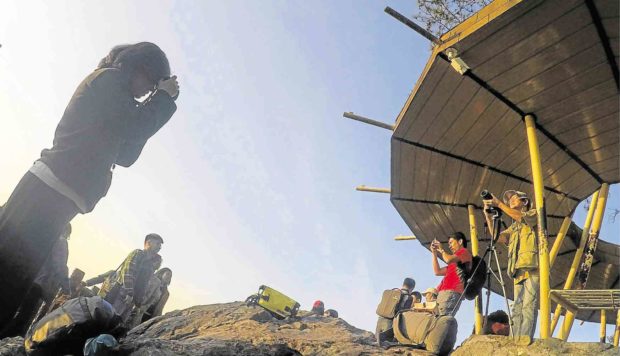Mercury continues to drop in Baguio

Credit to Author: besguerra| Date: Tue, 22 Jan 2019 21:16:08 +0000
BAGUIO CITY — Residents and tourists here on Tuesday woke up to their coldest morning this year as temperature dropped to 10.4°C, beating the 11.2°C recorded on March 11 last year.
The plunge came after days of erratic weather pattern in a month that had normally been associated with nippy mornings.
The cold weather was caused by the prevailing northeast monsoon or “hanging amihan” in Northern Luzon and the effects of the low pressure area hovering over parts of the Visayas and Mindanao, said Wilson Lucando, weather observer at the Philippine Atmospheric, Geophysical and Astronomical Services Administration (Pagasa) station here.
The mercury had been dropping in the summer capital in the last few days, with 12.4 C registered on Jan. 8, 12°C on Jan. 15, and 12.5°C on Jan. 18.
At nearby Mt. Sto. Tomas in Tuba town, Benguet province, the temperature was 11.4 C on Tuesday, Lucando said.
Residents and visitors here have been advised to wear thick clothes to prevent illnesses, especially if they plan to go outdoors.
Braving the cold
But the cold weather has not deterred elderly residents, wearing traditional Cordillera attire, from posing for pictures to spice up tourists’ photos in front of the botanical garden here.
Diana Sil-eg, 85, and Orayas Manganip, 81, have been braving the cold for 10 years. “We come here every day despite the cold and as long as it’s not raining,” Sil-eg said, adding that they usually use three to four pieces of clothing to stay warm.
Manganip said the cold was nothing compared to when she was young. Back then, she would layer her clothes and wear a thick jacket. “Back then Baguio was colder. It got so cold that even three shirts did not help me stay warm,” she said.
The Pagasa station here said it expected the mercury to drop further in the coming days. On Feb. 14, 2017, the temperature dropped to 7.3°C, still far from the record low of 6.3°C registered on Jan. 18, 1961. —Valerie Damian